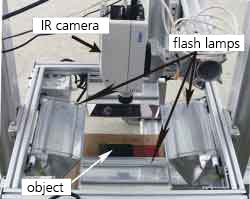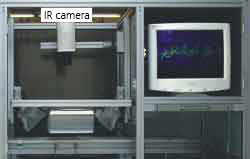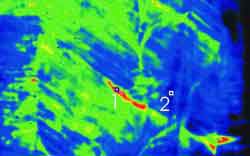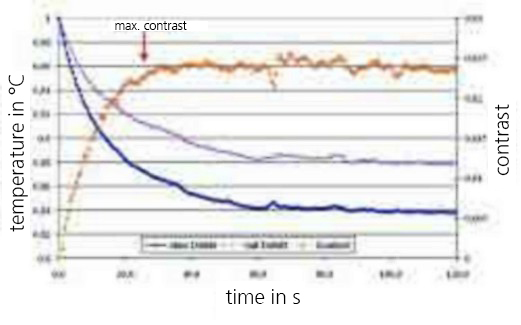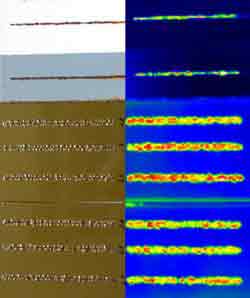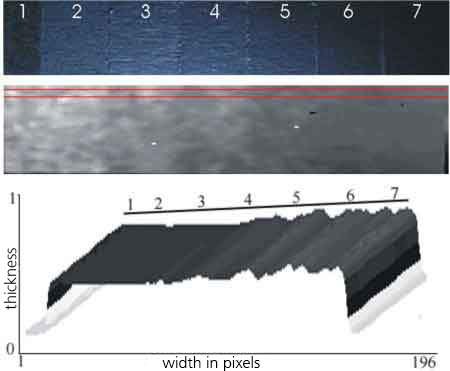Principle
In pulse thermography, the material remains stationary and the surface of the object is briefly (a few milli- to microseconds) heated very homogeneously by a few degrees (less than 5 °C) using fast-acting radiators or flash lamps.
If there are no material differences or structural weaknesses beneath the surface, this heat pulse penetrates the material uniformly and the surface subsequently cools very homogeneously. If there are adhesion flaws, insect larvae feeding holes or other inhomogeneities below the surface where the heat flow to depth is impeded, this area on the surface is usually characterized by a higher temperature, and in rare cases by a lower temperature. These locally differently warm areas of the surface can be detected with the help of a thermographic camera.
The setup shown in the following pictures is available at the Wilhelm-Klauditz-Institut (WKI) for investigations using pulse thermography. In it, small series of samples with the size of approx. 0.5 x 0.5 m² can be automatically examined and evaluated.

